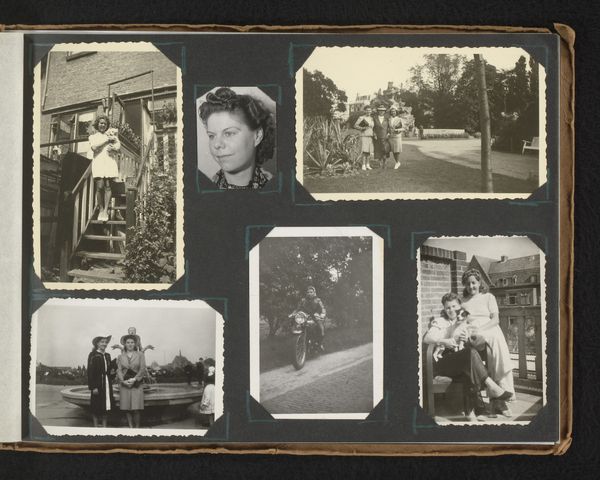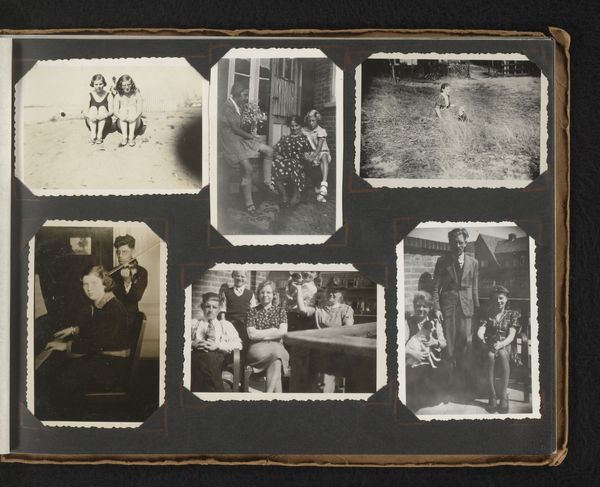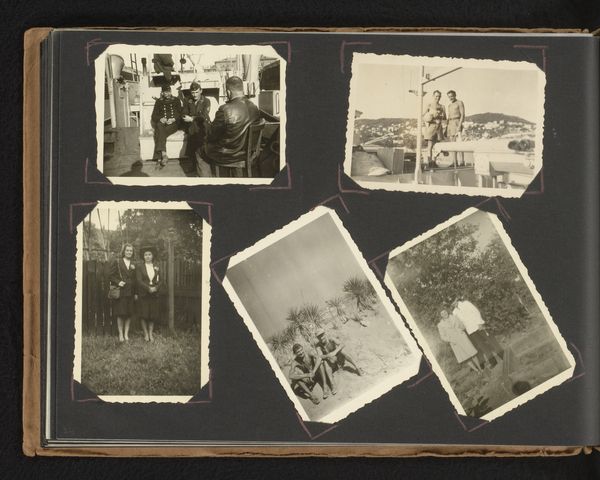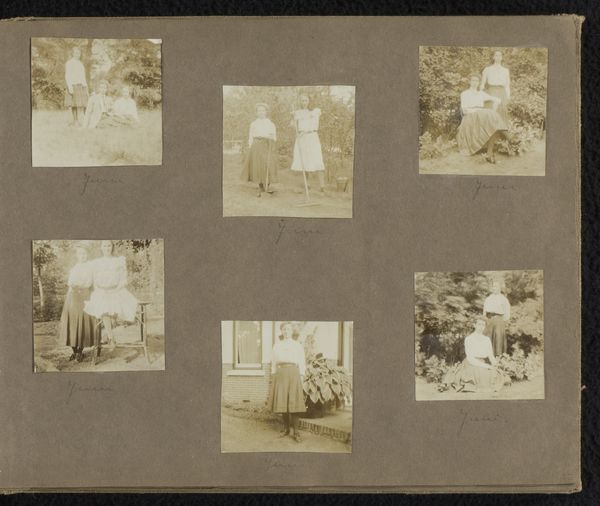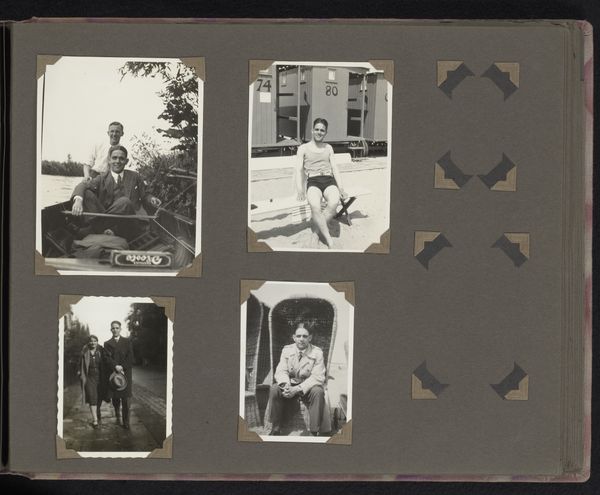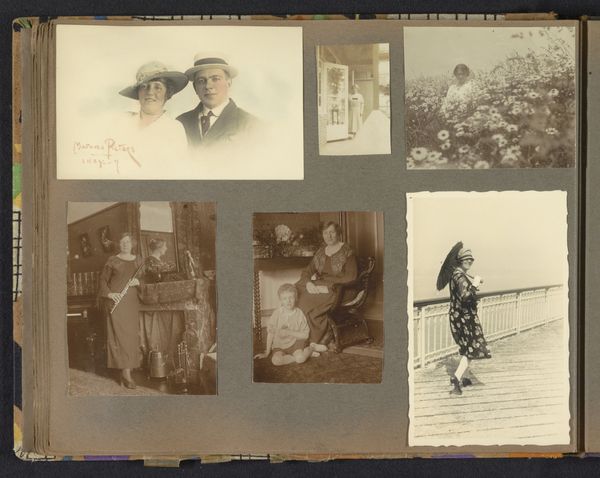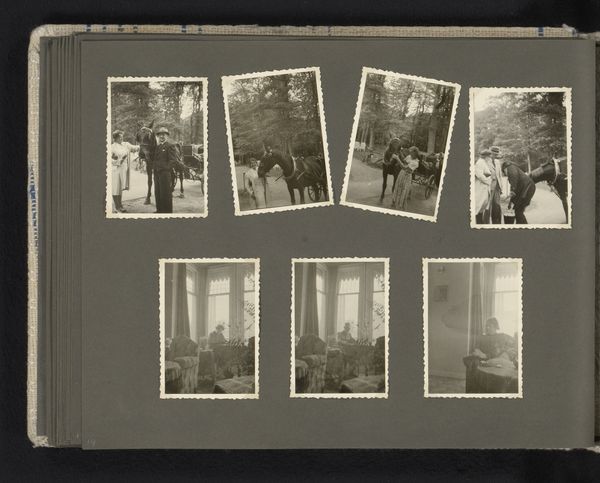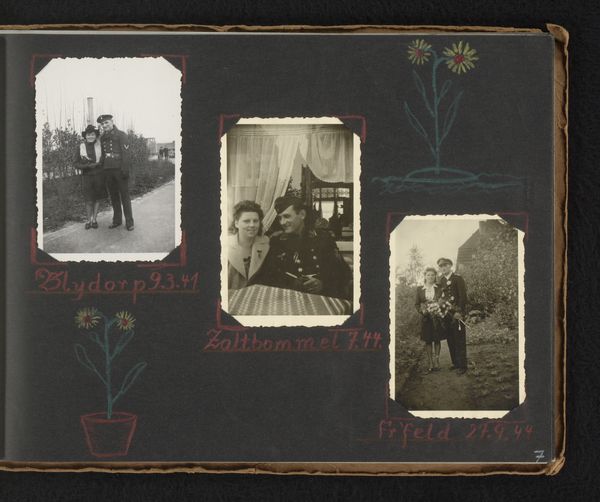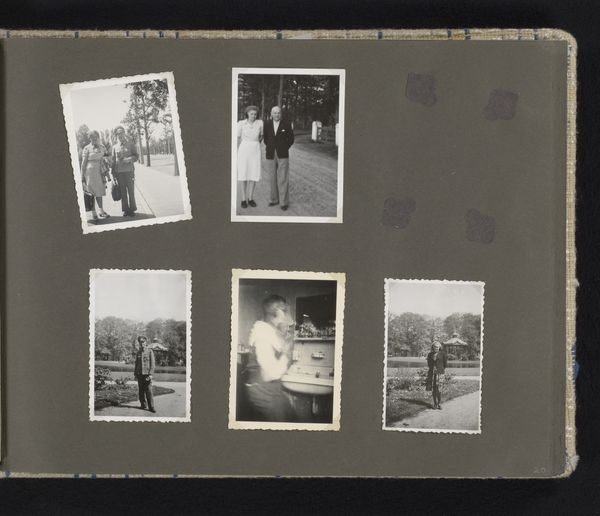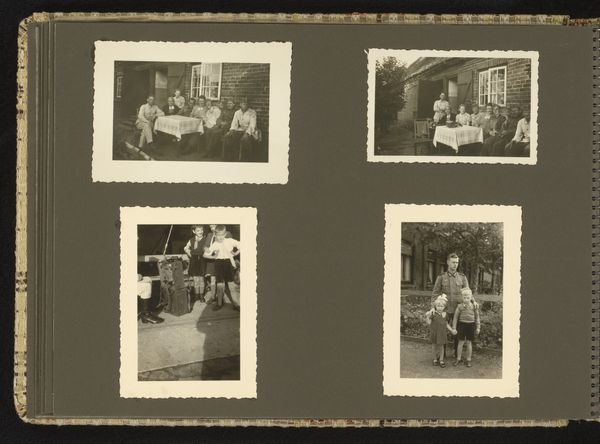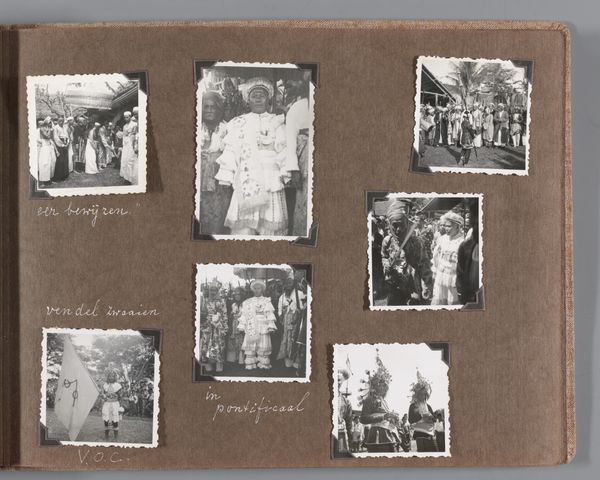
Dimensions: height 85 mm, width 60 mm, height 180 mm, width 240 mm
Copyright: Rijks Museum: Open Domain
Editor: This is "Thea en vriendinnen", which translates to "Thea and Friends", a collection of gelatin silver and albumen prints dated from 1938 to 1944. Presented in a photo album, they evoke such an intimate and nostalgic mood... Given that timeframe, how do these ordinary scenes speak to a potentially turbulent historical context? Curator: The power here lies in the normalcy *despite* the extraordinary circumstances of the time. Think about the years – 1938 to 1944. As war raged and Jewish persecution increased, these images portray friendships, leisure, and everyday life. It begs the question: what role does such photographic documentation play during times of crisis? Is it resistance, a form of denial, or simply an effort to hold onto normalcy? Editor: It's almost defiant in its seeming ordinariness, but also potentially privileged, right? Were photographs like these widely accessible during this period, or was this more of a luxury? Curator: Good question. Photography, while more accessible than painting, was still class-dependent. Owning a camera, film, and having access to developing facilities implied a degree of economic stability. Therefore, these images subtly highlight a certain socio-economic position amidst the widespread hardship. It also informs the visual narrative: who is *allowed* to be visible and whose stories are told? Editor: So by focusing on personal narratives and visible friendships, the artist indirectly reveals not only the era's atmosphere but also societal structures related to wealth and access... What do you take away most strongly from this piece? Curator: I'm reminded that seemingly simple snapshots can become potent historical documents, revealing intricate layers of social reality when viewed through a critical lens. And for me it begs us to ask who holds the ability to archive memory, and how these acts shape the public narrative of history. Editor: It certainly gives you pause to think about what images we capture, and what they might come to mean in the future. I've really learned a lot.
Comments
No comments
Be the first to comment and join the conversation on the ultimate creative platform.
